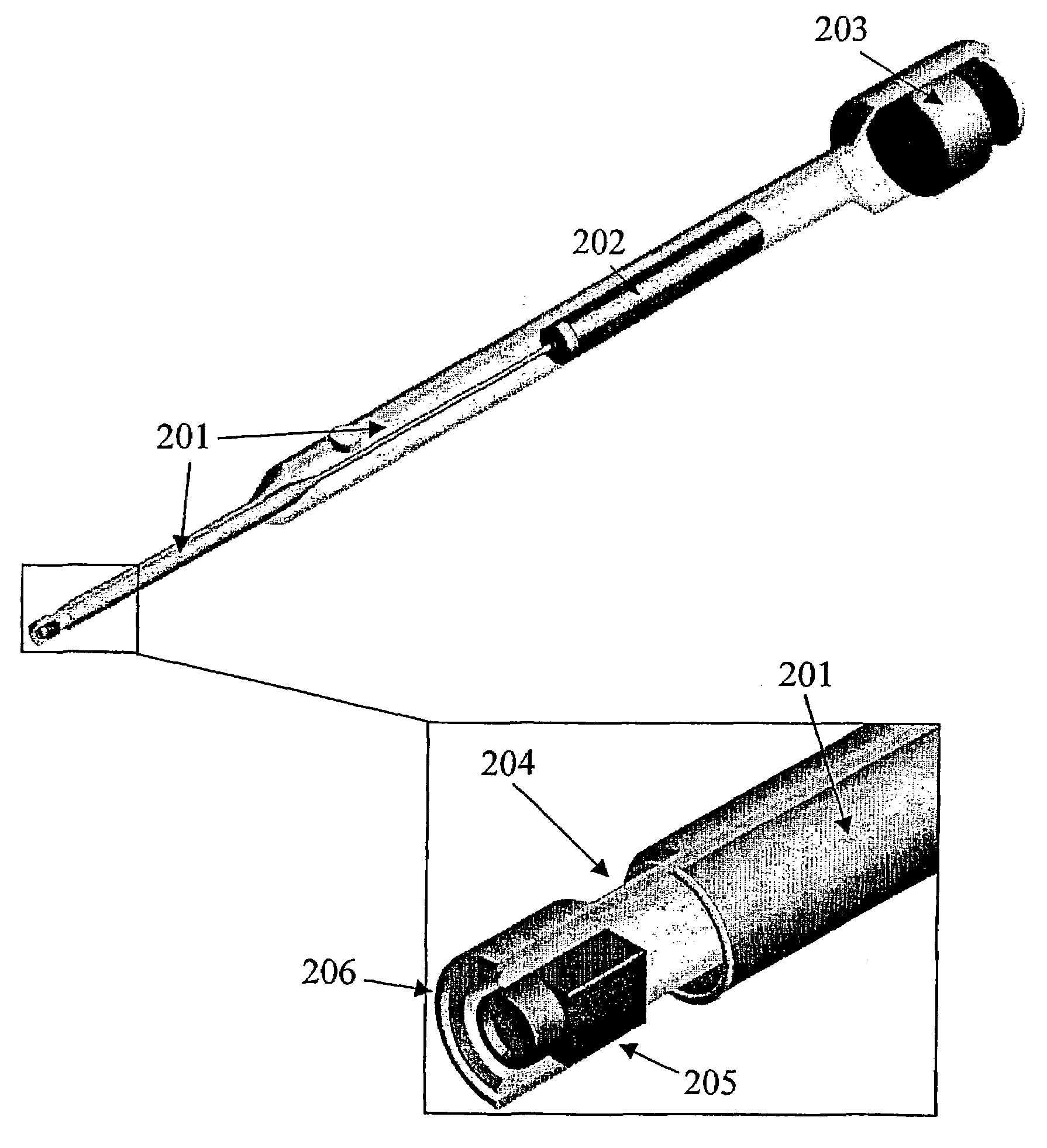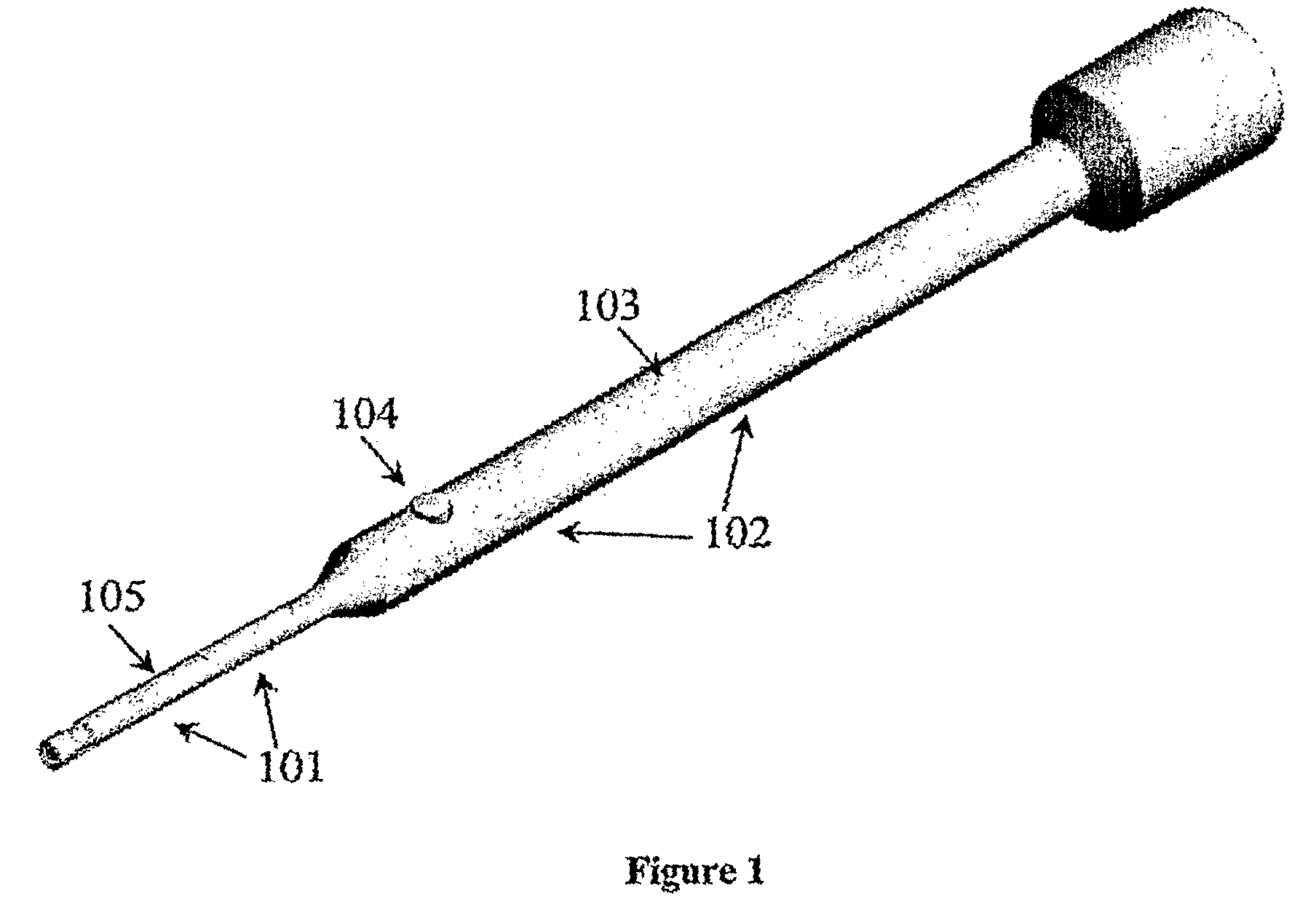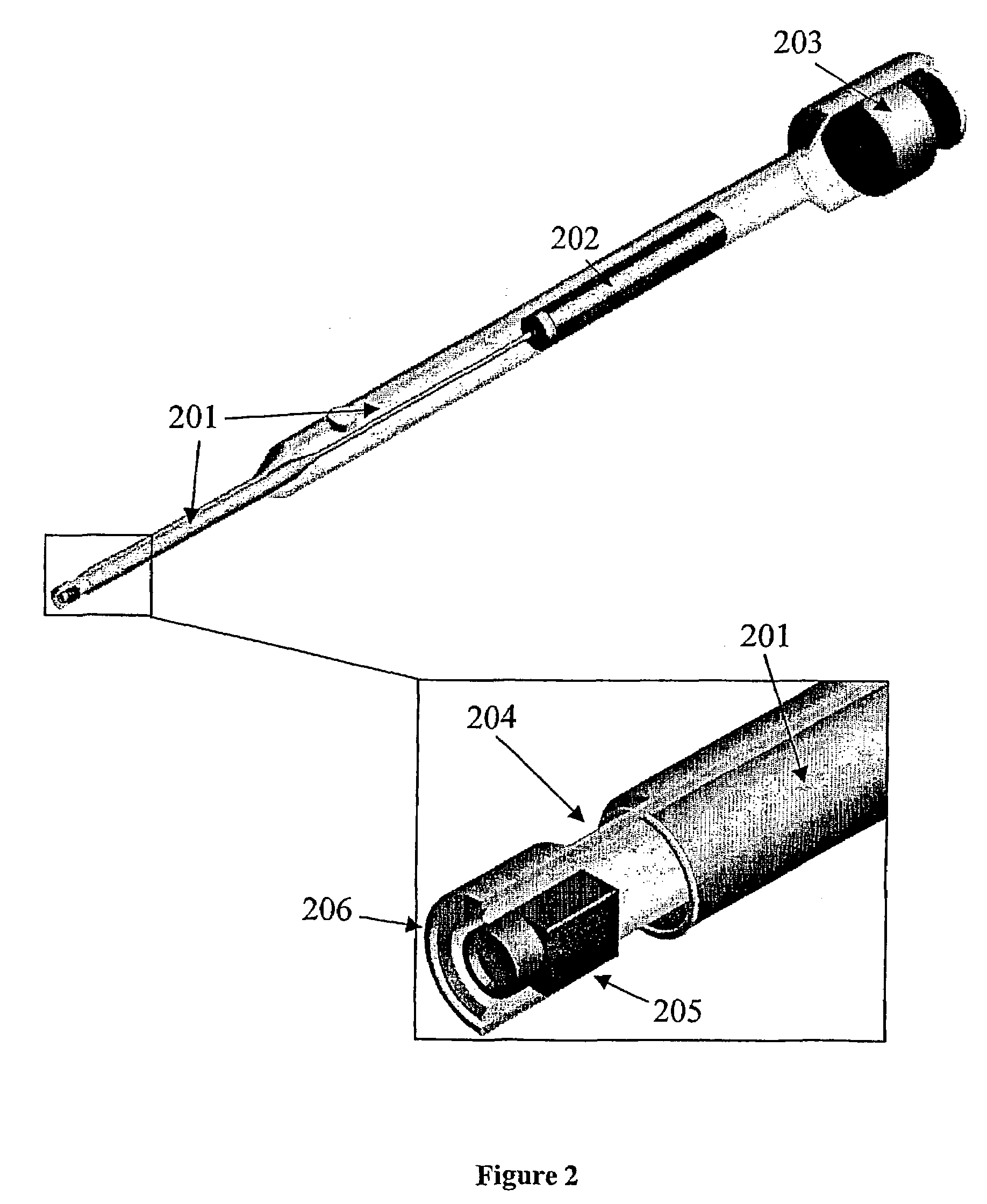Method and apparatus for three-dimensional optical scanning of interior surfaces
a three-dimensional optical scanning and interior surface technology, applied in the field of high-precision three-dimensional replicas, can solve the problems of irritability, acoustic feedback, and possibly infection of the epidermis of the ear canal, and systematic or random errors in the calibration and/or performance of scanners for these uses can be fatal, and limit the use of scanning in the modelling of such implants and shells. , to achieve the effect of easy production of complex models
- Summary
- Abstract
- Description
- Claims
- Application Information
AI Technical Summary
Benefits of technology
Problems solved by technology
Method used
Image
Examples
Embodiment Construction
[0056]Further scope of applicability of the present invention will become apparent from the detailed description given hereinafter. However, it should be understood that the detailed description and specific examples, while indicating preferred embodiments of the invention, are given by way of illustration only, since various changes and modifications within the spirit and scope of the invention will become apparent to those skilled in the art from this detailed description.
[0057]FIG. 1 to FIG. 4 illustrate two preferred embodiments of the invention. The first part 101 of the scanner is the probe, which is inserted into the cavity. The second part 102 is a handle. The scanner in FIG. 1 and FIG. 2 comprises a cover 103, a scan button 104, a disposable cover 105, light guides 201, a light source 202, a position sensor 203, optics and mirrors and / or prisms 204, a camera 205 and a protector / collision detector 206. A rotating mirror and / or prism with a micro motor 301 is also added to th...
PUM
 Login to View More
Login to View More Abstract
Description
Claims
Application Information
 Login to View More
Login to View More - R&D
- Intellectual Property
- Life Sciences
- Materials
- Tech Scout
- Unparalleled Data Quality
- Higher Quality Content
- 60% Fewer Hallucinations
Browse by: Latest US Patents, China's latest patents, Technical Efficacy Thesaurus, Application Domain, Technology Topic, Popular Technical Reports.
© 2025 PatSnap. All rights reserved.Legal|Privacy policy|Modern Slavery Act Transparency Statement|Sitemap|About US| Contact US: help@patsnap.com



